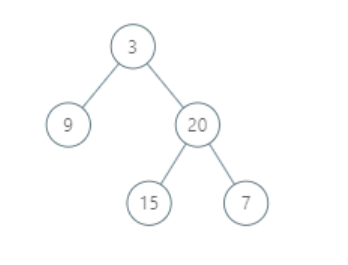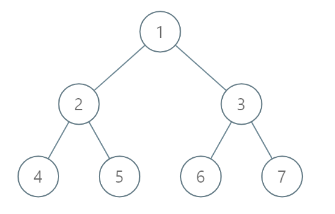|
|
马上注册,结交更多好友,享用更多功能^_^
您需要 登录 才可以下载或查看,没有账号?立即注册
x
- Given a binary tree, return the vertical order traversal of its nodes values.
- For each node at position (X, Y), its left and right children respectively will be at positions (X-1, Y-1) and (X+1, Y-1).
- Running a vertical line from X = -infinity to X = +infinity, whenever the vertical line touches some nodes, we report the values of the nodes in order from top to bottom (decreasing Y coordinates).
- If two nodes have the same position, then the value of the node that is reported first is the value that is smaller.
- Return an list of non-empty reports in order of X coordinate. Every report will have a list of values of nodes.
-
- Example 1:
-

- Input: [3,9,20,null,null,15,7]
- Output: [[9],[3,15],[20],[7]]
- Explanation:
- Without loss of generality, we can assume the root node is at position (0, 0):
- Then, the node with value 9 occurs at position (-1, -1);
- The nodes with values 3 and 15 occur at positions (0, 0) and (0, -2);
- The node with value 20 occurs at position (1, -1);
- The node with value 7 occurs at position (2, -2).
- Example 2:
-

- Input: [1,2,3,4,5,6,7]
- Output: [[4],[2],[1,5,6],[3],[7]]
- Explanation:
- The node with value 5 and the node with value 6 have the same position according to the given scheme.
- However, in the report "[1,5,6]", the node value of 5 comes first since 5 is smaller than 6.
-
- Note:
- The tree will have between 1 and 1000 nodes.
- Each node's value will be between 0 and 1000.
- # Definition for a binary tree node.
- # class TreeNode:
- # def __init__(self, val=0, left=None, right=None):
- # self.val = val
- # self.left = left
- # self.right = right
- class Solution:
- def verticalTraversal(self, root: TreeNode) -> List[List[int]]:
- res = []
- if root == None:
- return res
- hashmap = collections.defaultdict(list)
- queue = []
- cols = []
- max_val = 0
- min_val = 0
- level = 0
- queue.append(root)
- cols.append(0)
-
- while queue:
- size = len(queue)
- for i in range(size):
- curt = queue.pop(0)
- col = cols.pop(0)
- hashmap[col].append((level, curt.val))
- if curt.left != None:
- min_val = min(min_val, col - 1)
- queue.append(curt.left)
- cols.append(col - 1)
- if curt.right != None:
- max_val = max(max_val, col + 1)
- queue.append(curt.right)
- cols.append(col + 1)
- level += 1
-
- for i in range(min_val, max_val + 1):
- res.append([j for i, j in sorted(hashmap[i])])
- return res
|
|
 ( 粤ICP备18085999号-1 | 粤公网安备 44051102000585号)
( 粤ICP备18085999号-1 | 粤公网安备 44051102000585号)